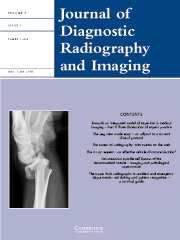No CrossRef data available.
Article contents
The peg view made easy – an adjunct to a current clinical protocol
Published online by Cambridge University Press: 18 May 2006
Abstract
Purpose: In 2001 an evaluative study was conducted involving an oral positioning aid (the E-Z-Em Mouthpiece). Manufacturer opinion suggested that the device may enhance safe and demonstrative practice in the radiographic and radiological components of case examinations involving acute trauma to the upper cervical spine. The study was conducted at Auckland Public and Starship Children's Hospitals, New Zealand with prior approval from Auckland Health Research Human Subjects Ethics Committee.
Literature review confirms that the atlanto-axial compartment of the cervical spine is most commonly involved in acute cervical spine injury. Consequently difficulty experienced in achieving adequate and optimal radiographic demonstration of the osseous and articular structures of this complex region is well reported.
Methods: The study adopted applied programme evaluation – methodology. The evaluation was conducted within a time frame stipulated by the ethics approval. All participating subjects presented with a case history of trauma to the cervical spine referred for initial radiological assessment from either accident and emergency or admission departments. Radiographers who performed the examinations were requested to use the positioning device. When the examination was concluded, questionnaire participation was requested to provide reports from each examination. These reports were then subjected to analysis.
Results: Seventy-five patients participated in the study. Thirty-three questionnaires were completed (a respondent rate of 44%). Responses tended to endorse provision of the device for optional use within current examination practice. Factors influencing optional use of the device were difficulties associated with subject type, the position of external immobilising collars, peripheral injuries sustained by the patient and difficulty experienced with those subjects who had suffered multiple injuries with associated head injury.
Conclusions: This study supports provision for the availability and optional use of this product in certain cases, supporting the manufacturer's assessment of its capability to enhance aspects of image quality and assist subject immobilisation.
- Type
- Original Article
- Information
- Copyright
- 2006 Cambridge University Press


